Tripping & Falling: What I Took Away From My Disastrous Run
May was, by and large, a great month, and life was good. We had gone to A Coruña, and Andrea had passed an intensive medical course. Then we attended a delightful car show. My fitness was coming along, both on the bike and while trotting. I was consistently doing long runs, tacking on two kilometers every seven days. In A Coruña, I ran 23 kilometers, so the following week in Pontevedra, I was going to run 25.
I only made it to KM 19. Then, splat!
My right foot hit something on a super rough, broken concrete trail mid-stride. Suddenly off balance, I had no time to react, not even to put a hand out in front of me. I instantly went down.
Went down would put it mildly. In fact, with zero time to react, I promptly landed on my face, my mouth smacking hard onto the pavement.
“Oh no,” I whined as I remained on the ground. Eventually, I stood up while running the tongue underneath my front teeth. I took out my phone and looked at my reflection on the screen. I had chipped not one but two teeth. And I was a bloody mess.
My run was over, and I walked toward home, still 1.5 kilometers away. Minutes later, another runner saw me.
“¿Qué pasó?” he asked, pointing to my injuries. I explained as calmly as I could that I had tripped and fallen.
“¿Dónde?” he asked. I pointed behind me, saying it was only about 400 meters back there.
The kind man then urged me to call emergency services at 1-1-2, but I insisted that “estoy bien” and that I lived only a kilometer away. I was going to walk home, wash up, and assess the damage. At the very least, I needed to visit a dentist in the future.
He asked if I was dizzy (I wasn’t) and kept repeating the emergency hotline number (“ciento doce, ciento doce“). I explained that my girlfriend was a doctor working in the emergency room at that very moment, but that I probably would wait for her to come back home later that night. He wished me well and we parted with him saying “ánimo” as a word of encouragement.
Back home, I spent about two hours washing up. My right knee, right pinky, and left palm were particularly torn up. My upper lip was badly swollen. I had gashes beneath my nose and on the chin.
This was the worst accident I ever had, but I quickly decided it could be worse. I lost only the lower 20% of one of my front teeth, and a corner of a tooth to the side. That tooth had previously been enlargened by an orthodontist with composite material, so I lost little of the natural tooth. I was confident the front tooth could be repaired, as unsightly as it now was, without crowns or implants.
I didn’t break any bones, and I was pretty sure the wounds to the face would heal with minimal scarring, at least in the long term. The right knee was another matter. I was going to have a keloidal scar there for sure.
The blow to my confidence was worse. This was the third time I had tripped and fallen in the last year alone, which was not a sustainable rate. I decided that I was going to have to make some changes. As much as I like running, I hate getting my skin ripped apart and teeth broken even more.
Looking for Support
One of the things I did that afternoon was to look for other people’s experiences dealing with tripping and falling. I found a thread on Reddit entitled, “Have you ever tripped and fallen while out for a run?” It was a little comforting to see that other people had similar experiences to mine, minus the teeth-chipping.
Investigating the Issue
In that thread, someone mentioned that the wide toe box on his new shoes “caught every root and rock sticking out of the trail.” I thought that was interesting, but at that point was still thinking that I was just clumsy and trip-prone, especially at the end of a long run when I am tired.
The next day, I posted a message on the Fort Collins Trailrunning Facebook Group for people’s best tips on avoiding tripping. There were suggestions such as:
- Focus on picking up the knees and toes on uneven terrain.
- Keeping focus and staying in the moment.
- Look at the smoothest part of the path, not the obstacles.
- Don’t get behind on fluid and nutrition, to delay tiredness.
- Shortening stride length over rough ground.
I was particularly struck by how many people mentioned they solved their tripping issues when they reduced their shoe size by a half-size. That made me think about all the times I had tripped. Each time in the last five years was when I was wearing size 10, wide toe-box Lems Primal 2 shoes.

Compare them with my size 9.5 Puma H. Street shoes. I have only tripped and fallen once (in 2006) in the last 17 years despite running races from 1 to 100 miles in those shoes, both on- and off-road.
Looking at their profiles, it makes sense that the Lems would be catching on more roots and rocks.
Mitigation Ideas and Resolutions
From now on, these are the things I will be doing to avoid tripping and falling while running.
- Stick to running on pavement or smooth trails, at least for long runs. I can always go hiking off-road instead.
- If I am running a route with some technical sections, try to do those early in the run while I am still fresh.
- Slow down or even walk in dangerous sections.
- Buy some new shoes that are like the out-of-production Puma H. Streets. I think my days of using wide-toebox shoes for running are over.
- When doing my weekly sprints, do them on smooth pavement only. There’s a recreation trail in front of our house that is marked as a bike lane, but other runners are frequently sprinting on it. I think that is wise compared to the rougher running trails I was formerly doing sprints on.
- Focus on picking up the toes and knees when encountering rough sections.
- Consider wearing cycling gloves for longer runs to protect the hands in case of a fall.
- Consider wearing a mouthguard (like what football and basketball players use) or retainers for longer runs.
After tripping and falling at the end of a 26.2-miler last year, I already had resolved that I would race road marathons only. My recent accident only strengthened that resolution.
Shoelace Tying
A common reason cause of tripping are shoelaces that become untied.
To avoid that, I highly recommend tying the shoelaces with a double slip knot. (Do not confuse this with doing the standard slip knot twice.) Since switching to that knot 15 years ago, I have never had a shoelace become accidentally untied.
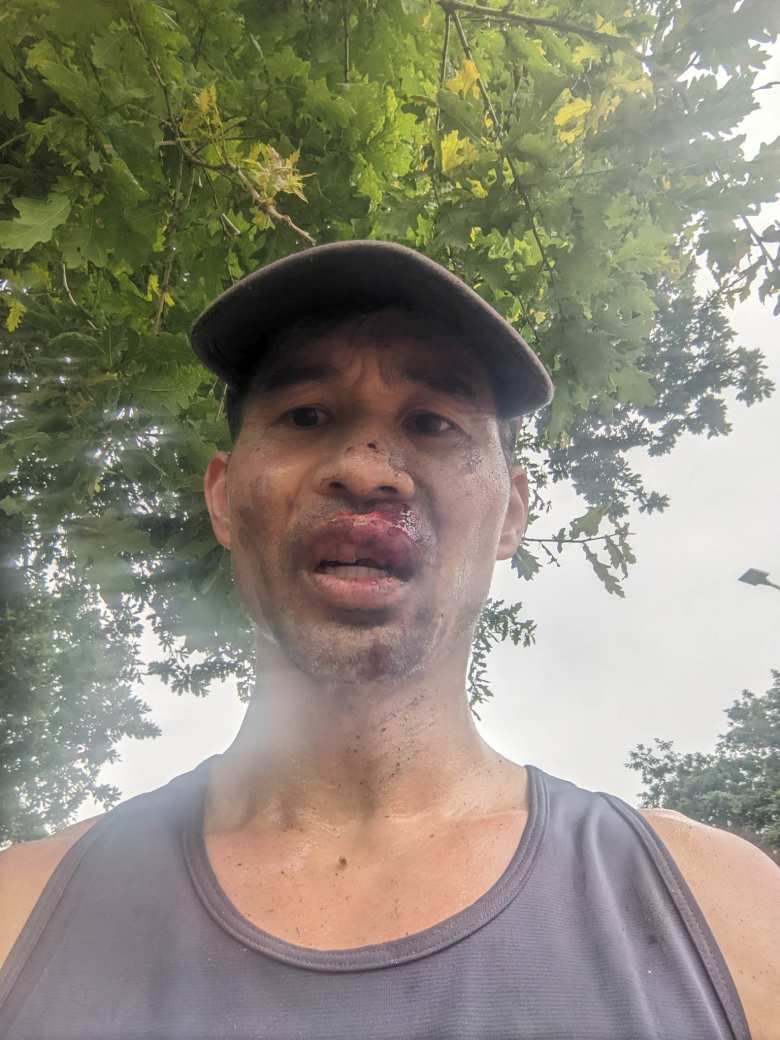
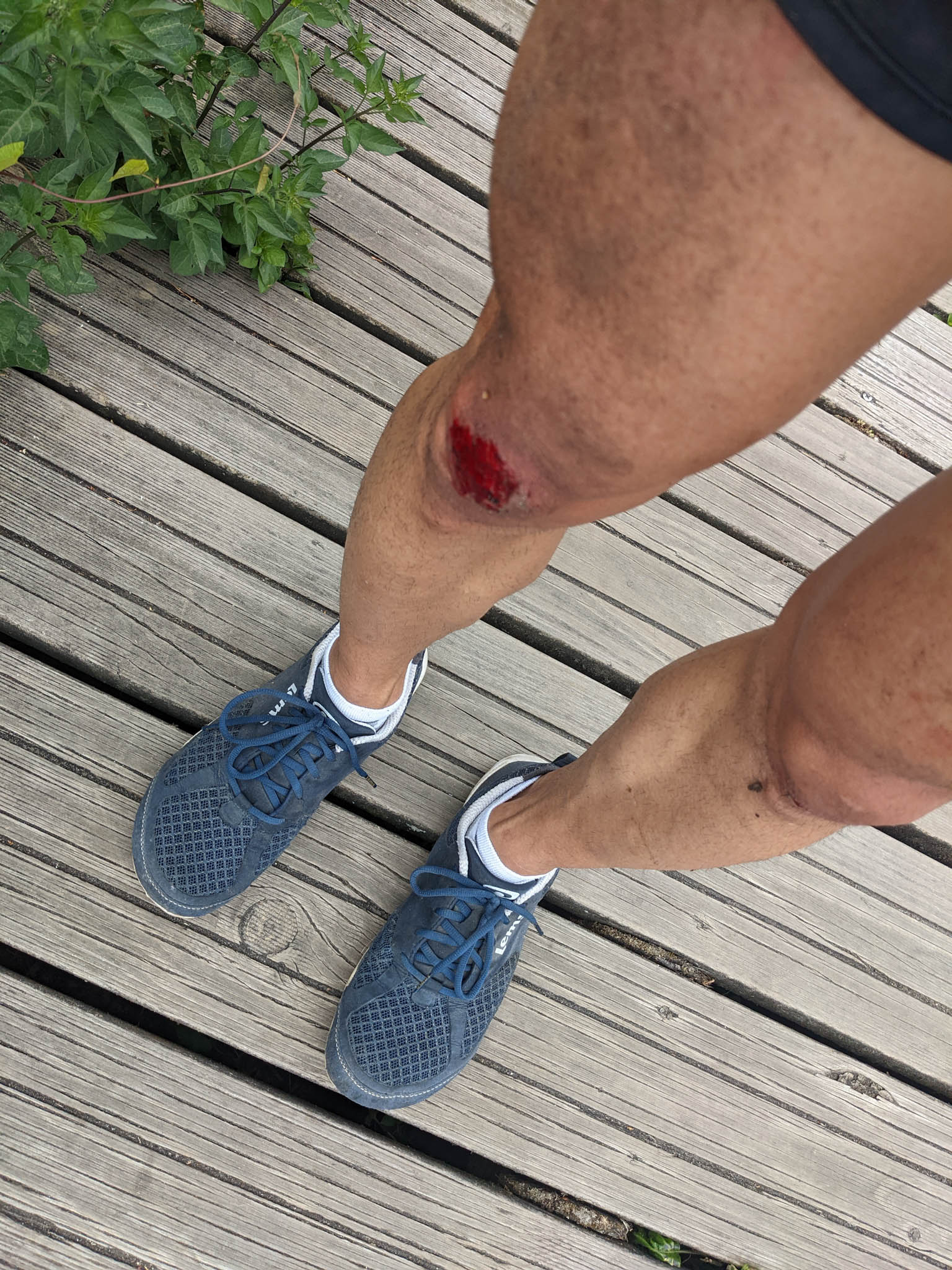
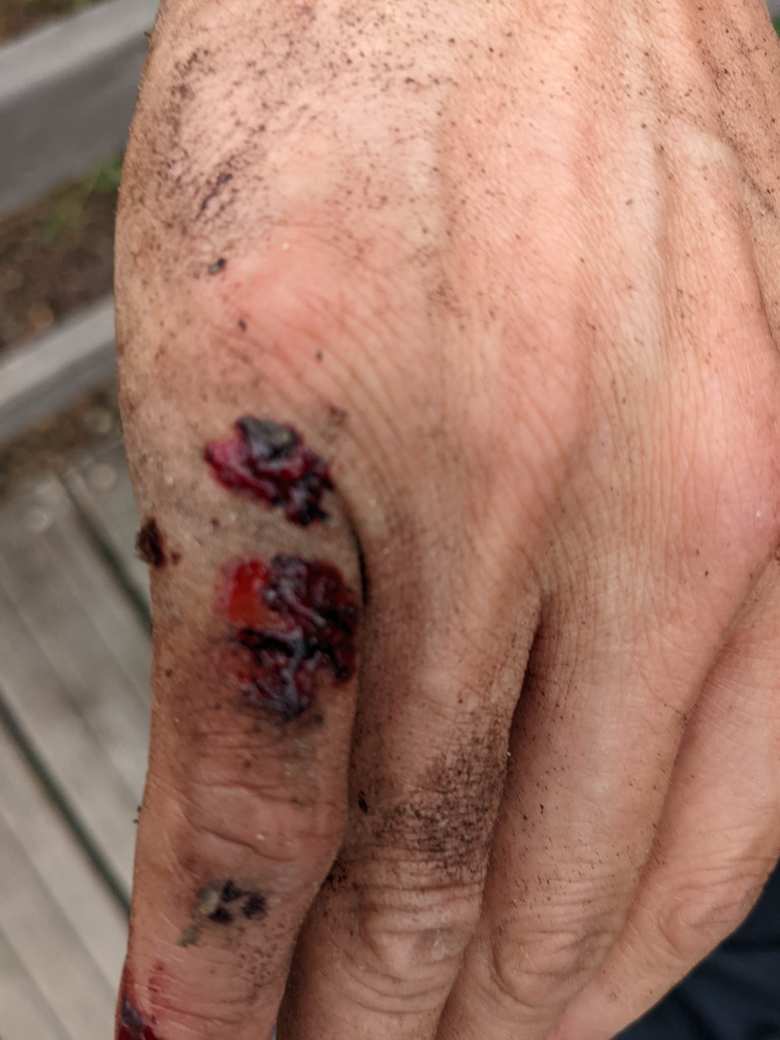
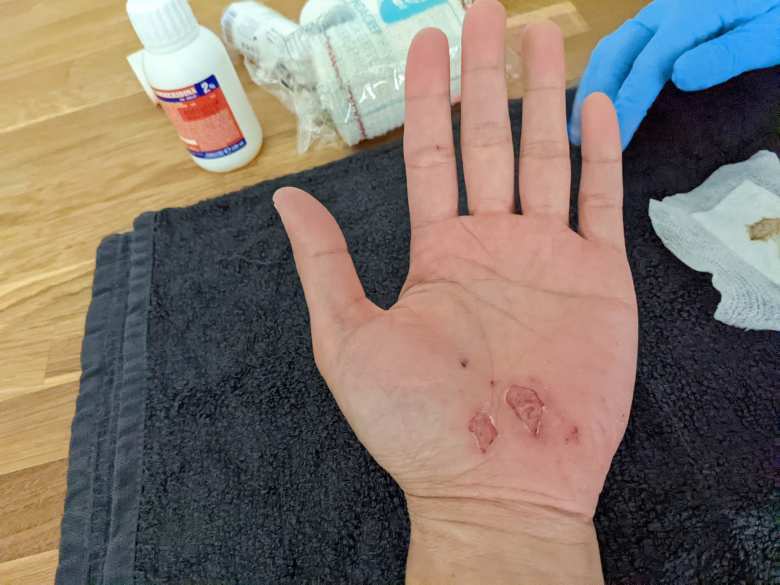
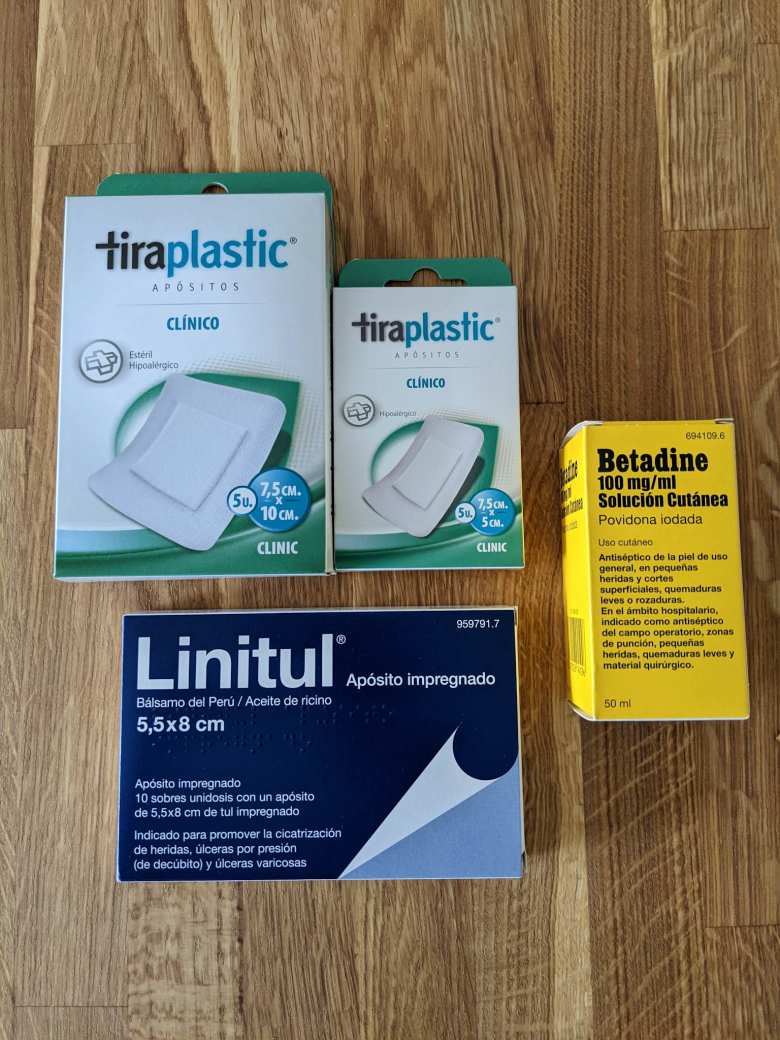
There are 2 comments.
Last Sunday,on February 4,2024 at 12:37PM, I ran and falling and cut left eye forehead ,left face, left knee and both hands.What the best ways to run correctly ?
Hi Fermin. That’s such a bummer about your fall. I can totally empathize. I hope you heal quickly. The good thing about the face is that it seems to heal much quicker than other parts of the body.
Regarding how to run and avoid falling, what seems to have eliminated tripping for me since my terrible fall was 1) wearing shoes that were not too oversized and 2) slowing down (sometimes even walking) in sections that looked sketchy.
About running “correctly,” common tips (that I agree with) include not overstriding, landing on the fore- or mid-foot instead of your heels, and having a stride rate of at least 170 steps per minute (180 for races, yet even higher for sprints).
Wishing you a speedy recovery!